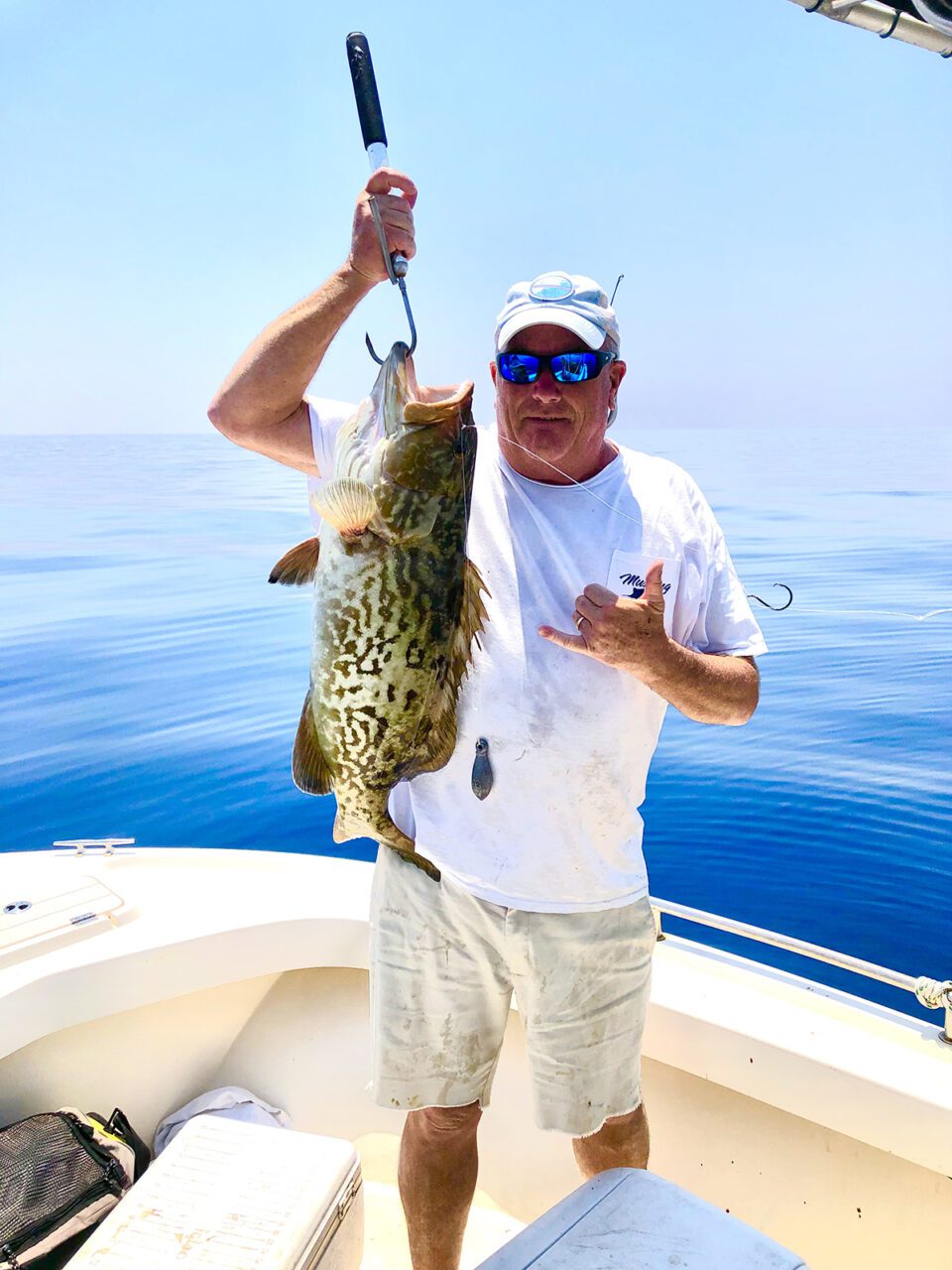
Not too long ago, we talked about descending devices, what they’re used for, why you need them, and a bunch of other things. But what use is a device to save released fish from deep water if you don’t know how to catch them?
So that’s what we’re going to talk about this time. Before you go out there, you need to have an idea of where you’re going, what do you do when you arrive, what baits you need, and probably a whole bunch more things I have not thought of yet.
Supporter Spotlight
To start with it, is probably a good idea to have an idea where to look. To help us with that, we asked a very accomplished weekend angler, Paul Gilbert, of Wilmington.
Gilbert fishes with his brother-in-law, Levi Wright, whom he calls “The Captain,” and they will go out trolling surface baits while looking for depth changes with hard structure on them in the form of rock piles and wrecks.
“We start somewhere in the 25- to 30-mile range and put out the ballyhoo spread for the early bite,” he explains.
They have a high-quality depth finder that will show structure changes, bait availability, and even the presence of fish.
“Some of the best ledges are very slight humps on the bottom,” according to Gilbert.
Supporter Spotlight
When all the pieces are present, they will go back and drop baits on those humps and see what is there.
“We do a quick drop on each ledge and if it produces, we stay longer.”

Drop a variety of baits on different rigs. Gilbert will rig things such as squid, cigar minnows, and even cut versions of bait stealers they catch, on the old standby Chicken Rig with enough weight to reach bottom 90 to 120 feet down.
There may be a surprise swimming by on the surface. “Keep a light line going if there’s life up top. Keep a pitch bait handy (one that can be deployed quickly on the surface) if a mahi or cobia swims up to join the party,” is Gilbert’s advice.
Another inside tip from Gilbert: “Last trip I brought out some nice palm-sized pinfish and got into the gag grouper pretty good. I caught them with a pinfish trap, and used a Fishfinder rig and 3-foot leader.”
Because the good spots are so difficult to find, Gilbert will stick on a spot until they decide that it is no longer producing. It is an old saying that you should not leave fish to find fish, which means don’t leave the spot until you know for sure that it is no good. There are clear signs that it’s time to go.
The fish that we are targeting will be aggressive and will bite quickly if they are present. If sharks become a problem it’s time to leave.
“When you catch the first shark, think about which ledge to hit next, when you catch the second shark, you go.”
As far as rods go, this is not the place for light tackle. Use a 4/0-size reel loaded up with 60-pound braided line. Too small of a spool will have you cranking for days. It takes a lot of weight to get down sometimes, so a rod with a soft tip is contra-indicated. More people are looking at electric reels when fishing over 200 feet. That’s a lot of reel turns.
Another way to target fish in deep water is by jigging. This allows you to target fish that are more active and higher in the water column. Along with snapper and grouper, you’ll also get hits from different species of jacks, king mackerel, and tuna.
Joel Elliott, secretary and board member of the Hillsborough Sportfishing Club, enjoys going out on the various big party boats around Atlantic Beach and Beaufort and targeting big fish with jigs in deep water.
This is a more involved method of targeting fish in terms of the skill involved to get strikes, keeping lures from snagging on the bottom, and of course being able to land fish on a busy party boat. It’s very rewarding and there are some things that you need to know before you get started.
First of all, you are going to need your own specific rods and reels for the technique that you will be employing. Big spinning rods and reels loaded up with 60- to 80-pound test braided line are a good place to start. Reels such as the 6000 series from Daiwa, Shimano or other manufacturers are recommended and Elliot likes a custom-built jigging rod. Look to spend $300 to $600 to get started.
To target snapper and grouper with jigs, the best way is with a 10-inch Z Man HeroZ tail and 6-ounce jig head. Joel Elliott recommends using jigs with a glow feature when the water is 100 feet or deeper. Let it drop to the bottom then lift and fall, lift and fall. It will feel like a grab in the deep. You will need braided line because without it, you will be missing strikes and losing fish.
Remember: When you’re fishing for snapper and grouper, always be aware of the seasons in terms of what is legal to keep and what is not.
Joel points out that, “A big challenge of jigging off a headboat, is that you want to be able to control the fish and keep them vertically under you as much as possible to avoid tangling up with others.”
Hopefully this will be enough to get you started with deep-water fishing for grouper and snapper. Just remember, always have your descender device and be prepared to release the fish that you cannot keep. Always be aware of the seasons and know what is going on. You don’t need to have a problem with the Coast Guard when you’re heading back in to shore.
Now get out there and load up the boat with some delicious snappers and groupers.







